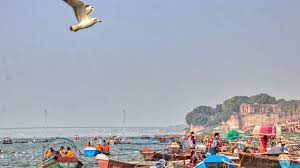
The significance of the holy city of Amritsar
Amritsar is one of the holiest cities in India and is located in the state of Punjab. It is home to the famous Golden Temple, also known as Harmandir Sahib, which is a significant pilgrimage site for Sikhs. The city has a rich history and cultural heritage, and is known for its food, art, and music. In this blog, we will explore the significance of the holy city of Amritsar and its importance in Sikhism and Indian history.
The History of Amritsar:
Amritsar has a rich and ancient history that dates back to the Vedic period. It is mentioned in the Rigveda as Ambarsar, which means "pool of nectar". According to Sikhism, the city was founded by Guru Ram Das, the fourth Guru of the Sikhs, in the 16th century. He built a temple at the site of the pool of nectar, which later became known as Harmandir Sahib or Golden Temple.

In the 18th century, the city became the center of the Sikh empire under the leadership of Maharaja Ranjit Singh. During this period, Amritsar became a center of trade and commerce, and was known for its architecture and art.
Significance in Sikhism:
Amritsar is considered to be one of the holiest cities in Sikhism, and is the spiritual and cultural center of the Sikh religion. The Golden Temple, which is located in the center of the city, is the most important pilgrimage site for Sikhs. It is a symbol of the Sikh faith and is considered to be a place of spiritual purification and enlightenment.

The Golden Temple is known for its stunning architecture and art, and is covered in gold leaf, which gives it its distinctive appearance. It is surrounded by a pool of water, which is believed to have healing powers. Sikhs from all over the world come to Amritsar to visit the Golden Temple and to pay their respects to the Sikh gurus.
The Langar, which is a community kitchen that provides free food to all visitors, is an important part of Sikhism and is a symbol of the Sikh principle of seva or selfless service. The Langar serves over 100,000 people every day and is run entirely by volunteers.
Amritsar in History:

Amritsar has played an important role in the history of India and is known for its role in the Indian independence movement. In 1919, the Jallianwala Bagh massacre took place in Amritsar, where British troops fired on unarmed protesters, killing hundreds of people. This event is considered to be a turning point in the Indian independence movement and is remembered as a symbol of British oppression
During the Partition of India in 1947, Amritsar became a center of violence and bloodshed as Hindus and Muslims clashed. The city was divided between India and Pakistan, and many people were forced to leave their homes and flee to other parts of the country.
Conclusion:
Amritsar is a city with a rich and diverse history, and is considered to be one of the holiest cities in India. It is the spiritual and cultural center of the Sikh religion and is known for its stunning architecture, art, and food. The Golden Temple is a symbol of the Sikh faith and is visited by millions of people every year. The city has played an important role in the history of India and is remembered as a symbol of the struggle for independence and freedom.

